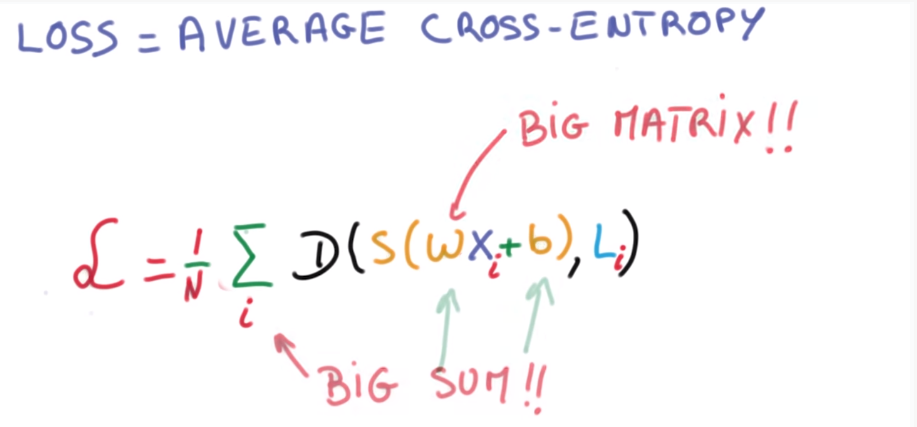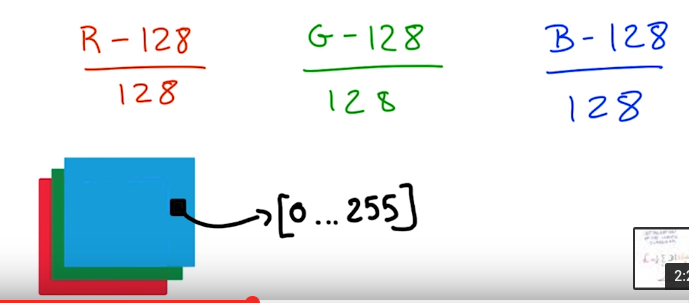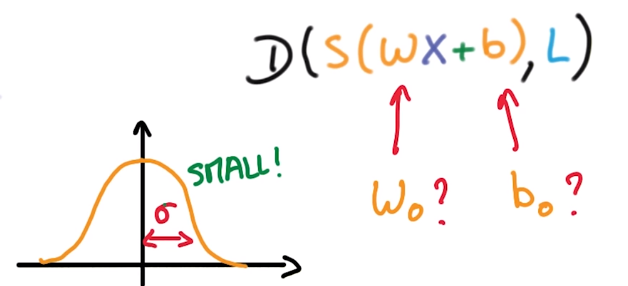这是udacity上deeplearning的笔记, 做得非常粗糙, 而且这门课也只是介绍性质的... https://www.udacity.com/course/deep-learning--ud730
Softmax function
socres yi ⇒ probabilities pi

property: smaller scores ⇒ less certain about result

Onehot encoding

Cross entropy
measure how well the probability vector S corresponds to the label vector L.
⇒ cross entropy D(S,L)( D>=0, the smaller the better)

N.B. D(S,L) is not symmetric (never log 0 )
recap ("multinominal logistic classificaton"):

Minimizing cross entropy
take avg D as loss function:
 ⇒ optimization, for example, by grad-desc:
⇒ optimization, for example, by grad-desc:

for the moment, take the optimizer as black box.
two practical problems:
- how to feed img pixels to classifiers
- how to initialize the optimization
numerical stability
adding very small values to very large values will introduce a lot of errors ! ex.
>>> a = 1e9
>>> for _ in xrange(1000000):
... a += 1e-6
>>> a - 1e9
0.95367431640625
⇒ the result is not 1...
⇒ normalize input ! ⇒ 0 mean, 1 variance
this make optimizers easier to find optimum.

normalization for images:

weight initialization
draw init w/b from a Gaussian(0, sigma), sigma → magtitude of initial output.
small sigma means small outputs → uncertain about result.
⇒ take small sigma for initialization

recap:
 ⇒ feed this loss fcn to the optimizer
⇒ feed this loss fcn to the optimizer
training, validation and test dataset
rule of thumb (30): a change that affects 30 examples in the validation set is statically significant. ⇒ in most cases use >30000 samples in validation set → changes in 0.1% is significant.
SGD
rule of thumb: computing grad(L) takes 3x time than computing loss fcn L. → pb for scaling..
 SGD is the only fast enough model in practice.
SGD is the only fast enough model in practice.
tricks to help SGD:
- normalize data (0 mean, uni-var)
- randomly initialize weights
- momentum
- learning rate decay
Momentum
SGD: many small steps in random directions → general direction is more accurate. ⇒ keep a running average of the gradients

Learning rate decay
take smaller and smaller steps (alpha decays)
e.g. alpha decays exponentially...
parameter tuning
how quickly you learning != how well you train..
 balck magics in deep learning:
balck magics in deep learning:

Adagrad variant of SGD, implicitly decays momentum and learning rate.
recap:

Disqus 留言